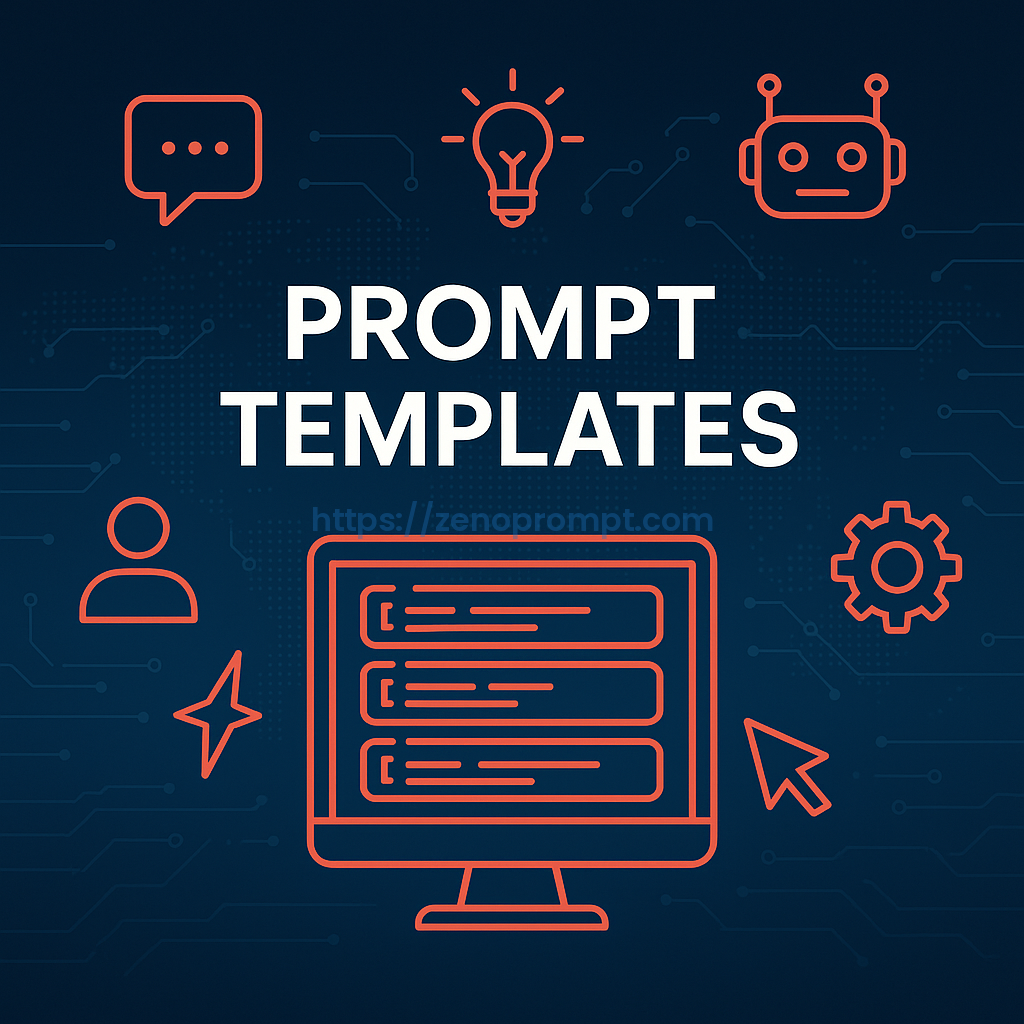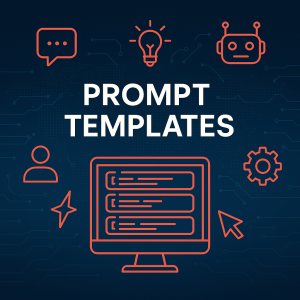🔍 Unlocking Creativity with Prompt Templates: The Power of Structured AI Queries

🔍 Unlocking Creativity with Prompt Templates: The Power of Structured AI Queries
As artificial intelligence continues to reshape the way we work, create, and think, prompt templates have emerged as a critical tool in unlocking the true potential of generative AI. Whether you’re working with ChatGPT, Midjourney, Jasper, or other AI systems, using well-structured prompts can significantly enhance accuracy, creativity, and productivity.
- 🔍 Unlocking Creativity with Prompt Templates: The Power of Structured AI Queries
- 📌 What Are Prompt Templates?
- 🧠 Why Prompt Templates Matter
- ✍️ Popular Use Cases for Prompt Templates
- 🛠️ Prompt Template Frameworks (Ready-to-Use)
- 🧩 Best Practices for Using Prompt Templates
- 🌍 Prompt Templates & Global AI Adoption
- 🔮 The Future of Prompt Engineering
📌 What Are Prompt Templates?
A prompt template is a pre-designed structure or framework that guides AI on how to respond. Instead of writing freeform queries every time, users can input variables into a consistent format. This method is especially useful for tasks like content generation, coding, image creation, and even data analysis.
Example:
Template: “Write a [type of content] about [topic] that includes [style or tone].”
Use: “Write a blog post about AI in education that includes a conversational tone.”
🧠 Why Prompt Templates Matter
Prompt templates:
-
Ensure clarity and consistency in output
-
Save time on repetitive prompt writing
-
Allow scalability for teams and projects
-
Minimize misunderstandings between user intent and AI interpretation
By using prompt templates, users can go beyond basic queries and start engineering more sophisticated interactions.
✍️ Popular Use Cases for Prompt Templates
Prompt templates are being used across industries. Let’s explore a few:
📰 1. Content Creation
Marketers and bloggers use templates like:
-
“Write a [length] article on [topic] with [SEO keywords].”
-
“Create a catchy headline for a [product/service] targeting [audience].”
🎨 2. Image Generation (AI Art)
In tools like Midjourney or DALL·E:
-
“A [style] illustration of [subject] during [time of day], hyper-detailed, 4K”
-
“Concept art of a futuristic city with [color palette]”
🧑🏫 3. Education & Learning
Teachers and e-learning developers create:
-
“Explain [topic] to a 10-year-old using simple terms and examples.”
-
“Generate a quiz with 5 multiple-choice questions about [subject].”
👩💼 4. Business & Strategy
Professionals use prompts for reports and summaries:
-
“Summarize this [report/meeting transcript] in bullet points.”
-
“Generate a SWOT analysis for [company/product].”
🛠️ Prompt Template Frameworks (Ready-to-Use)
Here are some reusable frameworks you can adapt:
-
Blog Article Prompt
“Write a [tone] [word count] blog post on [topic], including [keywords], and end with a [call-to-action].” -
Email Marketing Prompt
“Create a [tone] email introducing [product/service] to [audience], highlighting [features/benefits].” -
Social Media Prompt
“Generate a [platform] caption for a post about [topic], including relevant hashtags.” -
Visual Prompt for AI Art
“An image of [subject] in [style], with [mood], using [color palette], at [location/time].” -
Learning Prompt
“Explain [concept] as if teaching it to a [level of understanding] using analogies.”
🧩 Best Practices for Using Prompt Templates
-
Keep it modular: Use placeholders like [topic], [tone], [audience] for flexibility.
-
Be descriptive but not overly long—AI handles better when instructions are direct.
-
Test and tweak: what works for one use case may need adjustments for another.
-
Document your best-performing prompts for future reuse.
🌍 Prompt Templates & Global AI Adoption
As businesses scale globally, multilingual and culturally sensitive prompt templates are becoming more critical. For example:
-
“Translate this [type of content] into [language] with appropriate cultural tone.”
-
“Adapt this marketing copy for [region] audience using local expressions.”
This allows AI to work as a global content partner, not just a one-language solution.
🔮 The Future of Prompt Engineering
Prompt templates are the foundation of prompt engineering, a growing skillset that merges creativity with logic. As more users engage with AI tools, the need for smart prompting strategies will increase. Future platforms may even feature “prompt marketplaces” where creators share optimized templates.
AI won’t replace people—it will enhance people who know how to prompt it.





